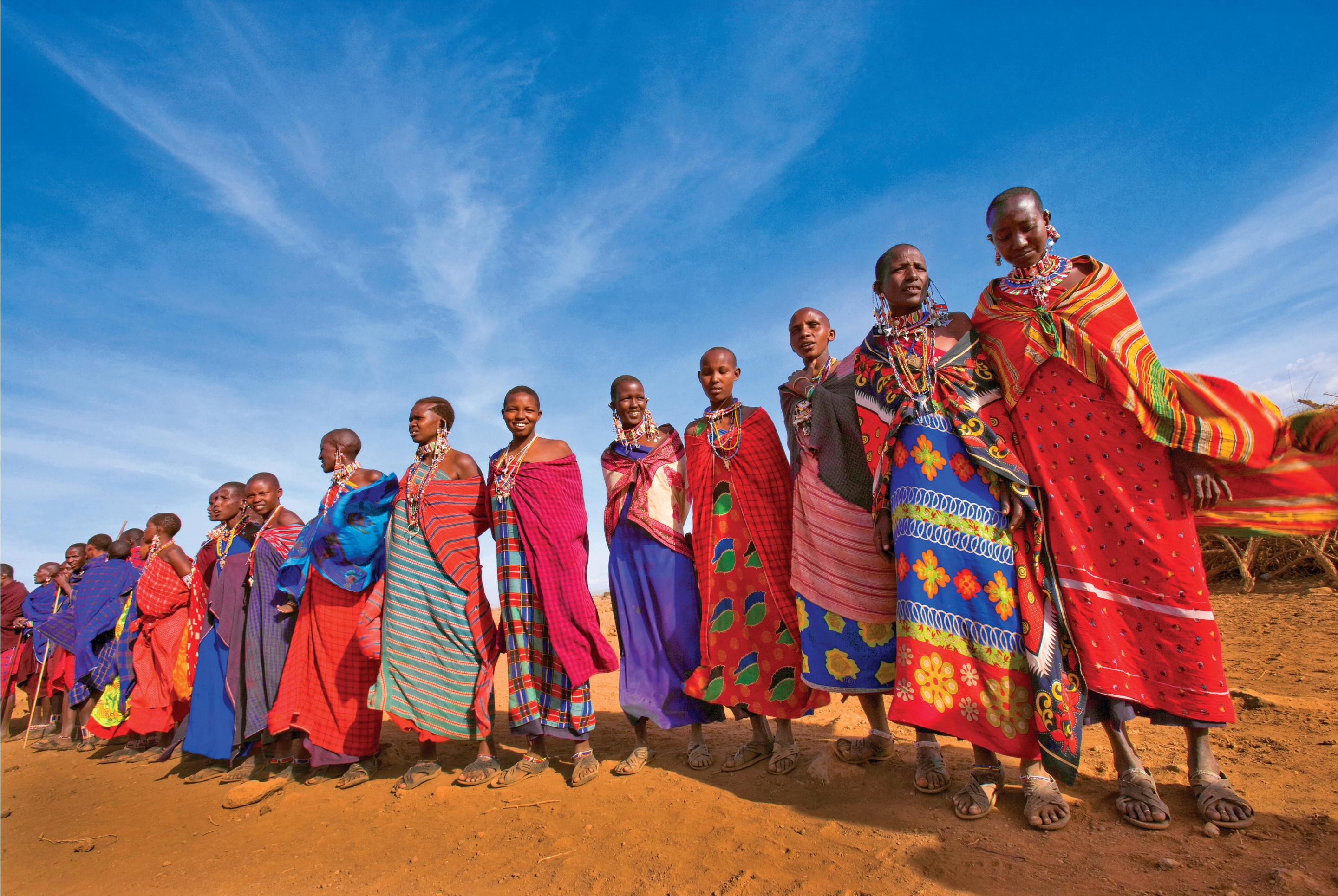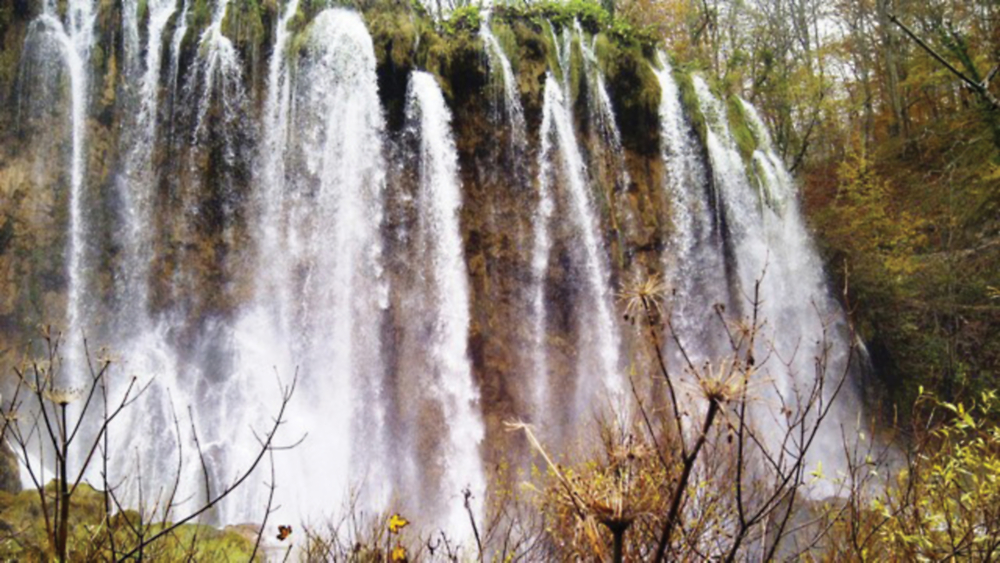You’re receiving this message because your web browser
is no longer supported
We recommend upgrading your browser—simply click the button below and follow the instructions that will appear. Updating will allow you to accept Terms and Conditions, make online payments, read our itineraries, and view Dates and Prices.
To get the best experience on our website, please consider using:
- Chrome
- Microsoft Edge
- Firefox
- Safari (for Mac or iPad Devices)
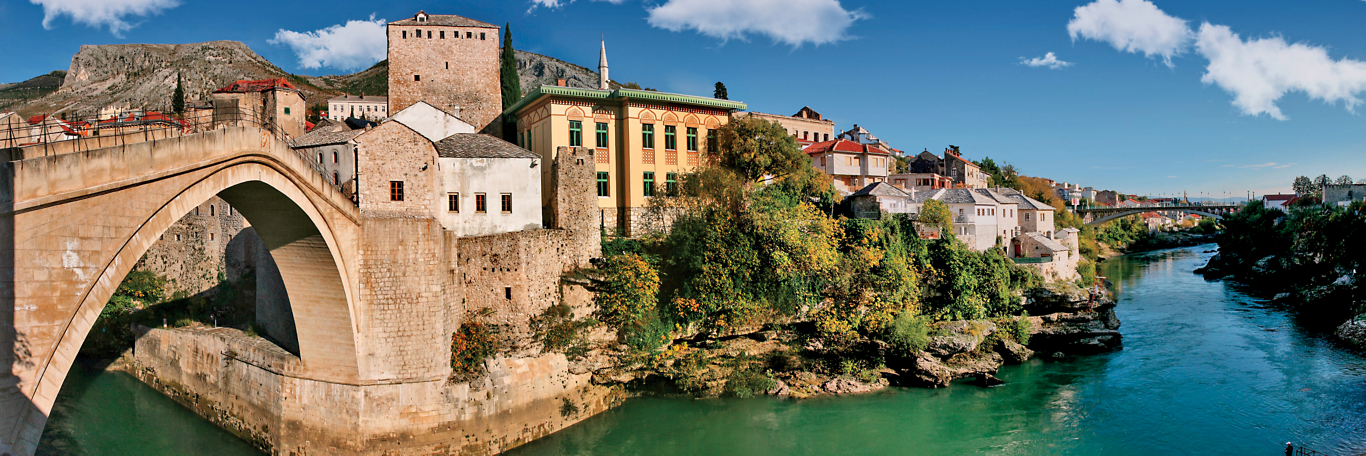
bosnia & herzegovina
Compare Our Adventures
Click 'Select to Compare' to see a side-by-side comparison of up to adventures below—including
activity level, pricing, traveler excellence rating, trip highlights, and more
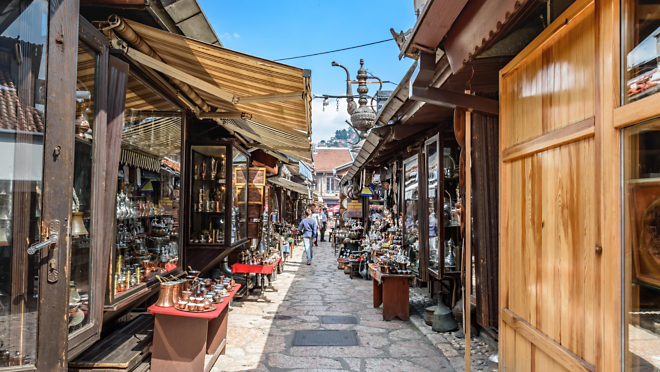
Spend 3 days in Bosnia & Herzegovina on
Crossroads of the Adriatic: Croatia, Montenegro, Bosnia & Herzegovina, and Slovenia
O.A.T. Adventure by Land
Spend 4 days in Bosnia & Herzegovina on our
Post-trip Extension
Bosnia & Herzegovina: The Irrepressible Spirit of Sarajevo
Bosnia & Herzegovina: The Irrepressible Spirit of Sarajevo

Compare Adventures
Add Adventure
including international airfare
per day
*You must reserve the main trip to participate on this extension.
**This information is not currently available for this trip. Please check back soon.
You may compare up to Adventures at a time.
Would you like to compare your current selected trips?
Yes, View Adventure ComparisonBosnia & Herzegovina: Month-By-Month
There are pros and cons to visiting a destination during any time of the year. Find out what you can expect during your ideal travel time, from weather and climate, to holidays, festivals, and more.
Bosnia & Herzegovina in January-March
Winters are downright cold in Bosnia & Herzegovina, with temperatures occasionally falling below zero degrees Fahrenheit and snow falling on the country's mountain peaks. This is how much of the outside world pictures Sarajevo, which took its place on the world stage in 1984 as the host of the Winter Olympics. Winter sports enthusiasts can enjoy several ski resorts outside Sarajevo, plus snowshoeing trails in the nearby hills.
Winter days are often gloomy and wet, and many tourist attractions are closed for the season.
Holidays & Events
- January 9: Republic Day marks the Bosnian Serbs' declaration of independence from Bosnia in 1992, the event that kicked off the three-year Bosnian War. It is celebrated only by Bosnian Serbs; the rest of the country celebrates independence on March 1.
- February-March: The International Sarajevo Winter Festival has taken place every winter since 1984, even persisting through the Bosnian War. The festival celebrates traditional culture and arts of the region.
- March 1: Independence Day takes place on the anniversary of Bosnia & Herzegovina declaring independence from the Socialist Federal Republic of Yugoslavia in 1992.
Watch this film to discover more about Bosnia & Herzegovina
Bosnia & Herzegovina in April-June
Springtime is one of the best seasons to visit Bosnia & Herzegovina, as the temperatures begin to warm and summer crowds have yet to descend on popular Sarajevo and Mostar. In the mountains, lush greenery is studded with blooming flowers, making the area's hiking trails even more stunning. The weather can be changeable, so visitors are advised to pack and wear a variety of layers. Temperatures on the mountain peaks are significantly cooler than elsewhere.
Peak tourist season begins in June, so hotels can fill up. And while the temperatures do get warm in the summer, it stays temperate compared to nearby Croatia. Summer days often hover around 75-80 degrees Fahrenheit.
Holidays & Events
- April 6: This is the anniversary of the start of the 1992 Siege of Sarajevo. In recent years, the day is marked with memorial concerts and peace protests.
- May 9: This holiday, the Day of Victory over Fascism, is one of few that all of Bosnia & Herzegovina celebrate together. It marks the defeat of Nazi Germany in World War II.
- June 29-30: The Mostar Summer Fest is an outdoor music festival celebrating local talent.
Watch this film to discover more about Bosnia & Herzegovina
Bosnia & Herzegovina in July-September
During the summer, temperatures in Bosnia & Herzegovina rise toward 85 degrees Fahrenheit; during an occasional heat wave the mercury passes 100. Most of the time, the weather is comfortable—and when it does get hot in the low-lying areas, the mountains around Sarajevo provide some relief.
Holidays & Events
- Mid-July: The International Folklore Festival brings traditional musicians and dancers from around the world to perform in Sarajevo's streets and town squares.
- August 21-25: Eid al-Adha is the Muslim Feast of the Sacrifice. Livestock is slaughtered and the meat is distributed to the needy.
Must See
For hundreds of years, daring souls have leapt from Mostar's Old Bridge into the cerulean Neretva River nearly 80 feet below. The bridge-diving peaks each July during a competition that attracts thousands of spectators.
The competition coincides with Baščaršija Nights in Sarajevo, a cultural festival featuring ballet, opera, and theater performances.
Watch this film to discover more about Bosnia & Herzegovina
Bosnia & Herzegovina in October-December
As the temperatures become more mild, fall foliage sweeps over northern Bosnia & Herzegovina, painting the mountains and valleys in lovely shades of gold. Summer tourists have departed as well, making this an excellent season to discover the country's most popular destinations, such as the Old Bridge in Mostar and the Sarajevo bazaar.
When the holidays approach, bright and festive holiday markets dot town squares and vendors selling roasted chestnuts roam up and down city streets. Otherwise, the autumn and winter months are very quiet here once the damp and cold set in.
Holidays & Events
- November 25: Statehood Day is disputed, but the Bosniak-Croat Federation recognizes it on the anniversary of the signing of the resolution that formed Bosnia & Herzegovina in 1943. The Serbs celebrate it on November 21, the anniversary of the signing of the Dayton Peace Agreement in 1995.
Watch this film to discover more about Bosnia & Herzegovina
Average Monthly Temperatures
High Temp Low Temp
Bosnia & Herzegovina Interactive Map
Click on map markers below to view information about top Bosnia & Herzegovina experiences
Click here to zoom in and out of this map
*Destinations shown on this map are approximations of exact locations
Sarajevo

Early Romans may have gotten here first, but Sarajevo came into its own when the Turks arrived in the 15th century and set up palatial residences (giving the city its name—the Turkish word for palace is saraj). Through the centuries, Sarajevo became renowned for its tolerance and diversity—and for being at the center world-changing events. In 1914, Austrian Archduke Franz Ferdinand and his wife Sophie slowly drove over the Latin Bridge—the ancient stone structure spanning the River Miljacka. A man lurking in the shadows, Gavrilo Princip, fired his pistol, killing them both and setting off a chain of events that would escalate into the world’s first global war. Sarajevo entered the world stage again in 1984, when it hosted the Winter Olympics. Less than a decade later, the Bosnian War erupted, leaving 10,000 people killed and another 50,000 wounded. The scars may not be fully healed, but today’s Sarajevo offers an intoxicating mix of Turkish splendor and Old Europe charm along its cobbled streets. And where else could you find Ottoman, Austro-Hungarian, Slavic, Muslim, Orthodox, Catholic, and Jewish cultures all in one place?
Explore Sarajevo with O.A.T. on:
Tunnel of Hope
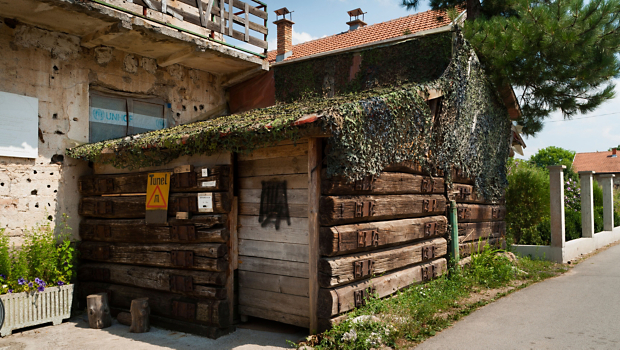
On April 5, 1992, Serbian tanks rolled across Bosnia and opened fire on Sarajevo, the beginning of a siege of the city that would last 43 months—the longest siege of a capital city in modern history. Under the constant threat of shelling and sniper fire, the people of Sarajevo were not only trapped—they were starving. In June of 1993, the Bosnian Army hand-dug a 2,600-foot-long tunnel from a house in Sarajevo to the free Bosnian territory just beyond the UN-controlled airport. It would become known as the Tunnel of Hope, providing a lifeline the city so desperately needed. Everything from guns to goats was hauled through the tunnel, and the people of Sarajevo were able to receive about 20 million tons of food. In the end, about one million people passed in and out of the Tunnel of Hope, including the former Bosnian president Alija Izetbegović—in his wheelchair.
Explore the Tunnel of Hope with O.A.T. on:
Mostar

Mostar is a divided town with the Neretva River running through its core. With Croats living to the west and Muslims to the east, a bridge spanning the river has served as a symbol of the ancient town all the way back to the sixteenth century—in fact, even its name, “Mostar,” means “keeper of the bridge.” In November of 1993, this slender and elegant bridge that had been in place since 1556 was shattered by Bosnian Croat artillery and tumbled into the emerald waters below. By 1995, the city was leveled. Many feel that the newly reconstructed bridge (Stari Most) represents a symbol of the future of Croat Muslim relationships in this ancient town of cobbled streets, craft guilds, and Ottoman-era splendor. And the locals continue to make the leap off Mostar’s iconic bridge into the cold waters some 78 feet below—just as they have been doing for 450 years.
Explore Mostar with O.A.T. on:
Home-Hosted Meal in Sarajevo

There’s no better way to get to know a country and its people than by being welcomed into a family’s home for dinner. It’s not just the pleasure of a home-cooked meal—it’s an opportunity for genuine cross-cultural exchange. During a Home-Hosted dinner in Sarajevo, you’ll experience genuine Bosnian hospitality and get to hear first-hand accounts of what it was like to survive a four-year siege of their city—a time when families were under constant artillery and sniper fire; food supplies were dwindling; and the entire city was completely shut off from the outside world.
Experience the local culture with O.A.T. on:
Featured Reading
Immerse yourself in Bosnia & Herzegovina with this selection of articles, recipes, and more
ARTICLE
Follow along as a travel writer recounts her journey through the Balkans—chock-full of surprises and hidden gems.
The Balkans: Lovely States of Mind and Meanderings
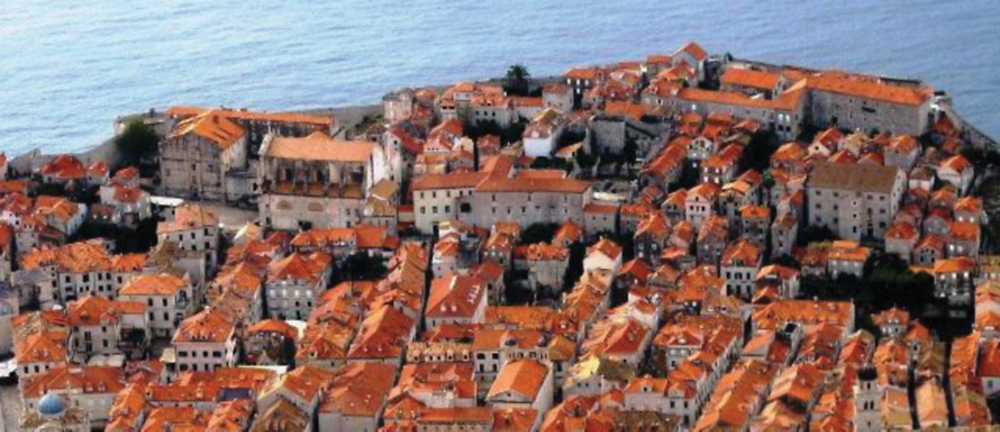
by Fyllis Hockman, for O.A.T.
This is not going to be your typical travel story. Oh sure, it started out that way. A story about a tour sponsored by Overseas Adventure Travel they called The Crossroads of the Adriatic. It was going to be all about the medieval town of Dubrovnik in Croatia, a series of dozens of waterfalls at Plitvice Lakes, streaming down cliffs, cascading over rocks, weaving through brush over an expanse of 114-square miles, exploring Sarajevo in Bosnia, a city that suffered through the longest, most devastating siege by Serbia’s hands in the history of modern warfare and a visit to Ljubljana, Slovenia, my newest favorite European city with broad promenades, wide pedestrian-only walkways and multiple town squares. And that’s just the tip of the itinerary that brought a new adventure to our group of 16 day after day. But that’s where the story veered into trouble …
I found myself being equally surprised and delighted by all the little extra things we were seeing and doing—and yes, often eating—that were NOT on the itinerary that I decided makes an interesting story in and of itself. Because, in all my travels with other tour companies, this has not always been the case.
This is not meant as a love letter to O.A.T. but rather my impressions of a travel philosophy of “Learning and Discovery” which O.A.T. takes very seriously and which elevated an already enticing itinerary into a far more expansive travel opportunity.
During our first day, we explored the Old Town of Dubrovnik, still resembling its 15th-century heritage, scaling its huge fortress walls to enjoy exhilarating views of the Adriatic coast. At night, ostensibly nothing is planned—until our ever-creative and ingenious guide, Ivana, notices a small sign on an old church announcing a string quartet concert. So with mostly make-shift chairs set up in the tiny church, we join the locals in witnessing a surprisingly professional performance.
En route home from Montenegro, a small country boasting ancient villages, a bay designated by UNESCO as one of the 25 most beautiful, aristocratic mansions and a Baroque shrine—in other words a full day of historical exploration included in our itinerary—we stop to visit a local (and yes, you will soon tire of that word …) embroidery artisan in traditional dress who regales us with the intricate process of embroidery, with an initial introduction to the silkworm who makes it all possible—literally. The little buggers are there in all its iterations from birth to thread. Admittedly for me, it was a little late in the evening to be all that interested in the lifecycle of a silkworm taking place before my eyes, but others in the group seemed more enamored.
At a small farmhouse where we spent the night near Slavonia, Croatia’s breadbasket, several women admired the pottery in the kitchen. Next day? Another unscheduled stop—this time at the potter’s shop—not only to buy, of course, but also to learn about the process of how the different cups and bowls were made. Ivana just set it up—she certainly didn’t have to.
And she even convinced the potter to open up to accommodate us even though it was the end of the season. Very persuasive, our Ivana. And because this was a stop mainly for the women she promised to find something comparable for the men. Of course, she didn’t have to look any further than a local brew pub in the next town.
Onto Bosnia-Herzegovina. And I need to pause here for a little history. The four countries we visited, along with Serbia and Macedonia, used to comprise Yugoslavia, where Marshall Tito reigned from 1945-1980 as a much-beloved, both then and surprisingly still, benevolent dictator—although admittedly not to those who disagreed with him. When he died, the economy crumbled, unemployment skyrocketed, and the unity and harmony among the many populations—Roman Catholics Croats, Orthodox Serbs, Bosnian Muslims and assorted Jews, who lived, worked and intermarried together—deteriorated into nationalistic jingoism and animosity. The Bosnian War of 1991-1996 was the result.
In Bosnia, the main L&D surprises revolved around food. First, an unscheduled stop at a roadside stand where Ivana bought enough tangerines, the agricultural specialty of a very verdant river valley en route to our next town, to last for the rest of the trip. Crossing over from Croatia to Bosnia-Herzegovina meant transitioning from Roman Catholic churches to Islamic mosques. Pocitelj, the first town we stopped in, is a typical old Muslim village frozen in time from the late 15th Century. Streets of rocky cobblestones transporting us back to the Middle Ages were marred only by an avalanche of tourist stands with local souvenirs. I always feel so guilty for ignoring the plaintive entreaties to buy, stand after stand after stand. I was happy to get back to our tangerines.
And then there’s the Tunnel of Life, the very low, narrow, dimly lit secret dirt passageway that led from under an airfield in Sarajevo to the Adriatic Sea. It was the only access to food, water, small arms and medical supplies that brought the only relief to the city of 400,000 who were victims of daily aerial bombardment for almost four years, as Serbia cut off all food, water, electricity, and medicines to the Muslim population it was trying to destroy. As we watched a video of the city disappearing building by building, street by street, explosion by explosion, Ivana tried to soften the emotional blow by plying us with burek, sweet Bosnian pastries. They helped, but just a little.
And did I mention the visit to a local mountain village priest—he just happened to be a personal friend of Ivana’s—ostensibly, of course, to learn a little more about the village lifestyle but I think the blueberry strudel that he himself cooked and the wine from nearby vineyards were more than sufficient incentive for the extra drive. The beautiful 18th-century church was just a bonus.
And while sampling truffles in one of the Istrian hill towns outside of Lovran, Ivana was asked how truffles are found. A quick phone call later and another detour of the bus (we had a very accommodating bus driver who sometimes seemed in cahoots with Ivana as to what surprise to spring next), we were meeting with a truffle hunter and his dog, Riki—who demonstrated the well-protected art of finding the evasive white and black gourmet gold.
In case our three squares a day weren’t sufficient, even the local guides got into the act by providing us with even more to eat in the way of local snacks: “You can’t possibly leave (fill in the town) without sampling (fill in the delicacy…)” was their mantra. Among the many savory offerings were the best of regional chocolates, the yummiest roasted chestnuts, the finest Bosnian coffee, the sweetest rahat lokum (Turkish delight), the grandest Istrian truffles, the best of cream cakes, the most delicious Bosnian burek, the mouth-watering strudel from Father Robbie’s oven, and my personal favorite, an almost endless amount of regional brandies at every stop. Blame the superlatives on Ivana.
During out tour of Zagreb, the sprawling European Croatian capital, the recent culinary L&D expanded into the arts.
Though ample free time is always factored into the tours—what should be time off for Ivana — she instead saw it as an opportunity to provide more options for her ever-greedy charges. In this case, tickets to either a jazz contest or the ballet, simply because they were in town when we were.
And when our Learning and Discovery adventures kept us on the bus traveling from town to town, country to country, they didn’t stop. As impressive as all our unscheduled stops were, even more so were Ivana’s constant tales of history, culture, Tito, controversies, architecture, Tito, education, economics, Tito—yes, they want him back—plus personal experiences and other tantalizing tidbits day after day. The fact that it was still as fascinating by the end of week two is even more of a phenomenal accomplishment.
So yes, my usual travel articles deal with the destination; this one with the journey. And what made that journey so unusual were the many moments of learning and discovery that jumped off the itinerary page and into my heart. Thank you, Ivana.
About the Author:
Fyllis Hockman, a frequent contributor to FAB Senior Travel, lives in the Washington D.C. area. She is an established, award-winning travel writer and a member of Society of American Travel Writers member since 1992. She has been traveling and writing for almost 30 years.
Traveler Photos & Videos
View photos and videos submitted by fellow travelers from our Bosnia & Herzegovina adventures. Share your own travel photos »
